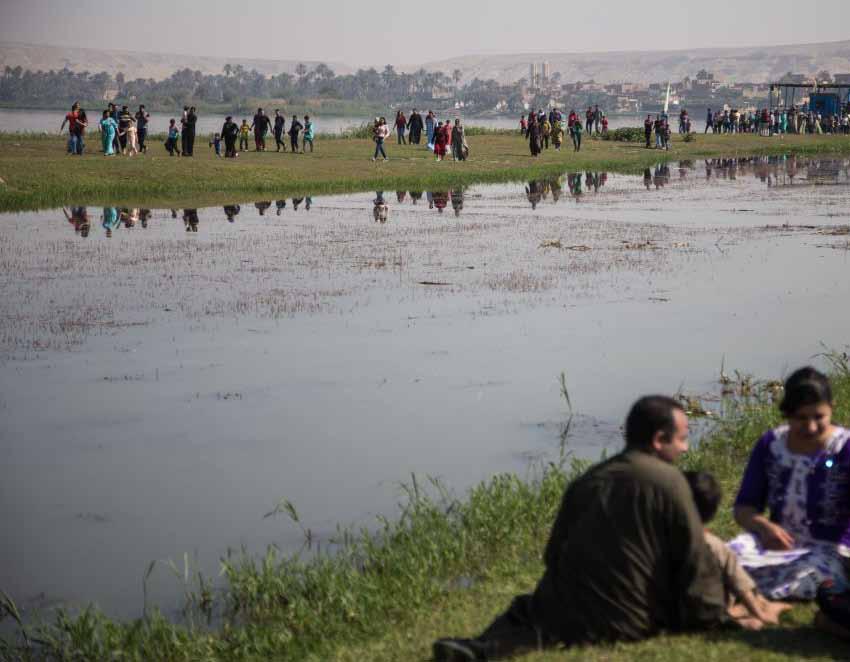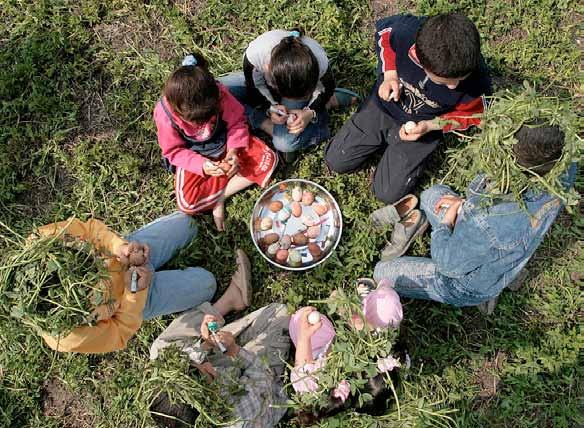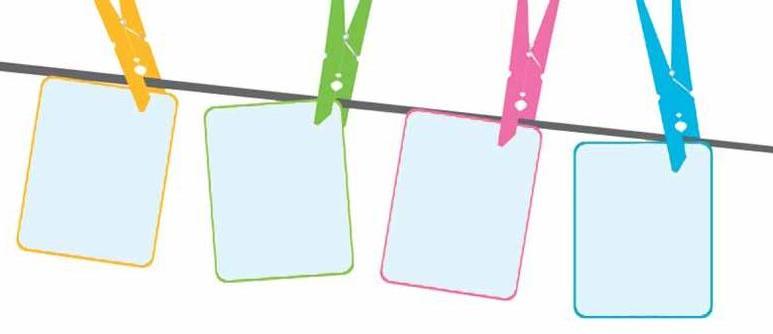
7 minute read
Ancient Living Traditions
from The Fake Syrian Elections
by المجلة
ultureC
Ancient Living Traditions
Sham El Nessim – Egypt’s oldest festival
Amira Noshokaty
Sham El Nessim is perhaps Egypt’s oldest festival and comes to us right off the walls of the temples. Ancient Egypt started to celebrate this feast at the end of the Third Dynasty, or around 2,700 BC,. According to the Egypt State Information Service, it was first called the Festival of Shmos (“Resurrection Feast”) in ancient Egypt. However, in Coptic Egypt it was shortened to Sham and the word Nessim (“breeze”) became somehow affiliated with it. According to the Egyptian Archives for Folk Life and Folk Tradition, this festival is also affiliated with the agronomy of ancient Egypt. It is usually celebrated on the 25th of the Coptic month Bramhat as a sign of the new spring/summer cycle and is a reflection of the Osiris doctrine which postulates life after death. Over the ages, Sham El Nessim became associated with a whole week of Coptic rituals that are concluded with this feast. The week before Sham El Nessim starts off with Palm Sunday when Egyptians usually make a wheat doll which is a mixture of palm leaves and wheat. They would hang it on their doors as a good omen for a prosperous year to come. On Monday they make porridge while Tuesday is for bloodletting (rarely practiced, but once used to get rid of the bad winter blood). On Ayoub (Job’s) Wednesday they follow the tradition of Prophet Ayoub who is said to have been cured after scrubbing with Juniper. On Thursday they make lentils while Friday is named Sad because it is the day that Jesus was pronounced dead. Saturday is the Saturday of light, when Jesus was resurrected. It is also a day where all Egyptians wear Kohl in their eyes in order to protect and enhance their vision in order to see a better year ahead. Then comes Sham El Nessim on Monday. At the crack of dawn on Monday, Egyptians
Egyptians walk and picnic along one of the branches of the Nile in the southern town of Mallawi, on April 9, 2018, as they celebrate Sham al-Nessim, a Pharaonic feast that marks the start of spring )Getty( flock to parks, gardens and the banks of the Nile where some take a cruise on a felucca. Then they eat their breakfast which has to include green onions, salted fish, lettuce and eggs, which are usually colored. There was a famous game they played on that day with colored eggs and stones that look like eggs. People would have to guess which is the stone and which is the real egg. Hence came the proverb “he who can play with stones and eggs,” meaning that someone is a deceitful person who can easily trick people. Egypt State Information Service reveals the historic concept behind such food. The colorful eggs are a symbol of life as explained in the Book of Dead and the hymns of Akhenaten. The ancient Egyptians used to write their wishes on eggs and hang them on trees so they see the light and God would grant their wishes. Eating salted fish is a way to pay tribute to the holy River Nile and the food it bestows on Egypt. Fish and lettuce are strongly associated with fertility in Egyptian heritage. As for the green onions, they are known to be a powerful remedy and protection against death because one of the ancient Egyptian royals got very sick and was cured by eating green onions. This happened a few days before Sham El Nessim and so they added the onions as one of the main ritual foods when they began to celebrate.
At the crack of dawn on Monday, Egyptians flock to parks, gardens and the banks of the Nile where some take a cruise on a felucca. Then they eat their breakfast which has to include green onions, salted fish, lettuce and eggs, which are usually colored.

Egyptian children color eggs in the al-Jazirah village, near the Nile delta city of Mansura, 120 kms north of Cairo, 09 April, 2007, as they celebrate Sham al-Nessim, a pharaonic feast that marks the start of spring. )Getty(
Po rt ra it

Abdullah Al-Mudayfer: The Third Saudi Broadcaster to Interview Saudi Crown Prince
By Majalla Illustration by Ali Mandalawi
Abdullah Al-Mudayfer is a Saudi TV presenter, journalist, and former writer working in production, media consultancy, and television. He presents a weekly program called “In the Picture” in addition to the Ramadan program “Al-Liwan” on “Rotana Khaleejia” and “Rotana FM”. Last week, Al-Mudayfer the newsmaker became the news when he landed an interview with the Saudi Crown Prince – only the third journalist to get such access after journalists Turki al-Dakhil and Dawood al-Sharian. The interview was held on April 27th on the fifth anniversary of the launch of the Kingdom’s Vision 2030 and took place through his program “Al-Liwan” on the “Rotana Khaleejia” channel. The Saudi interviewer was famous for talking boldly with his guests in multiple programs, such as the “Pulse of Speech” program, a previous Ramadan program known as “The core”, in addition to the Friday Meeting program. He also previously hosted elite names in several fields. Born in 1982 in the city of Buraidah in the Qassim region of the Kingdom of Saudi Arabia, AlMudayfer lived his entire childhood there. He graduated from the College of Sharia and Law which was his first choice of study because he aspired first to work in the Bureau of Investigation and Prosecution. Before entering the world of media and television production, AlMudayfer was a writer for the Saudi newspaper, Al Youm. Al-Mudayfer began his media career through the gateway of drama and experimented with acting and directing and was famous for appearing in conservative films on religious channels such as “Al-Majd”. In 2003, he wrote a script, acted, and directed the Saudi film “The Orphan Imad”, and it was considered at that time one of the first religiously conservative Saudi films which were presented with the recordings of Uhud at the time. He also worked in Uhud’s Production and Marketing before moving from it in 2004. He also wrote and directed the movie “White Hatred”. After his acting and directing experience, AlMudayfer moved to work in television production. With his appearance, the Arab media witnessed one of the most important and daring speakers on the Gulf channels. He was unique in his contemporary presentation on each of the Gulf Rotana screens, Al-Rasala and MBC, and he became one of the most important media professionals in the Arab Gulf. In May 2011, Al-Mudayfer presented about eleven episodes of the “Friday Meeting” program on the Gulf Rotana channel, and in Ramadan 2011 he presented the religious program “Nabd alKalam”(Speech pulse), which discussed several topics on Islamic jurisprudence and contemporary dealing with some Islamic religious teachings and traditions. During Ramadan 2012, he began presenting the program “In-depth” on Rotana Khalijia and AlResala channel, which is a bold talk show for which Al-Mudayfer was subjected to criticism because of his choice of guests topics covered and his frank questions. In late 2013, this program was stopped due to the controversy it caused in public opinion. In 2018, Al-Mudayfer returned to present the first season of the talk show “In the Picture”, which was shown on the Gulf Rotana channel and hosted many people who shared their experiences and visions freely and smoothly. In Ramadan 2019, he presented the dialogue program “Al-Liwan” on Rotana Khalijia and Rotana FM, and broke all the records, making it one of the most-watched programs in the Gulf. In October 2019, he also continued presenting the second season of “In the picture” achieving the same success that this program reached in its first season. During his work, Al-Mudayfer has stood out in direct conversations with figures influencing Saudi and Gulf public opinion and hosted many ministers, princes and senior state men, the most prominent of whom are: Prince Mohammed bin Salman bin Abdulaziz, Crown Prince, Deputy Prime Minister and Minister of Defense, Prince Khaled Al-Faisal, the advisor to the Custodian of the Two Holy Mosques and Governor of Makkah Al-Mukarramah Region, Prince Turki Al-Faisal and Prince Al-Walid bin Talal. Although such a public figure, Al-Mudayfer fiercely guards his privacy and that of his family. The newsmaker therefore knows very well how to generate headlines without becoming the news himself!





